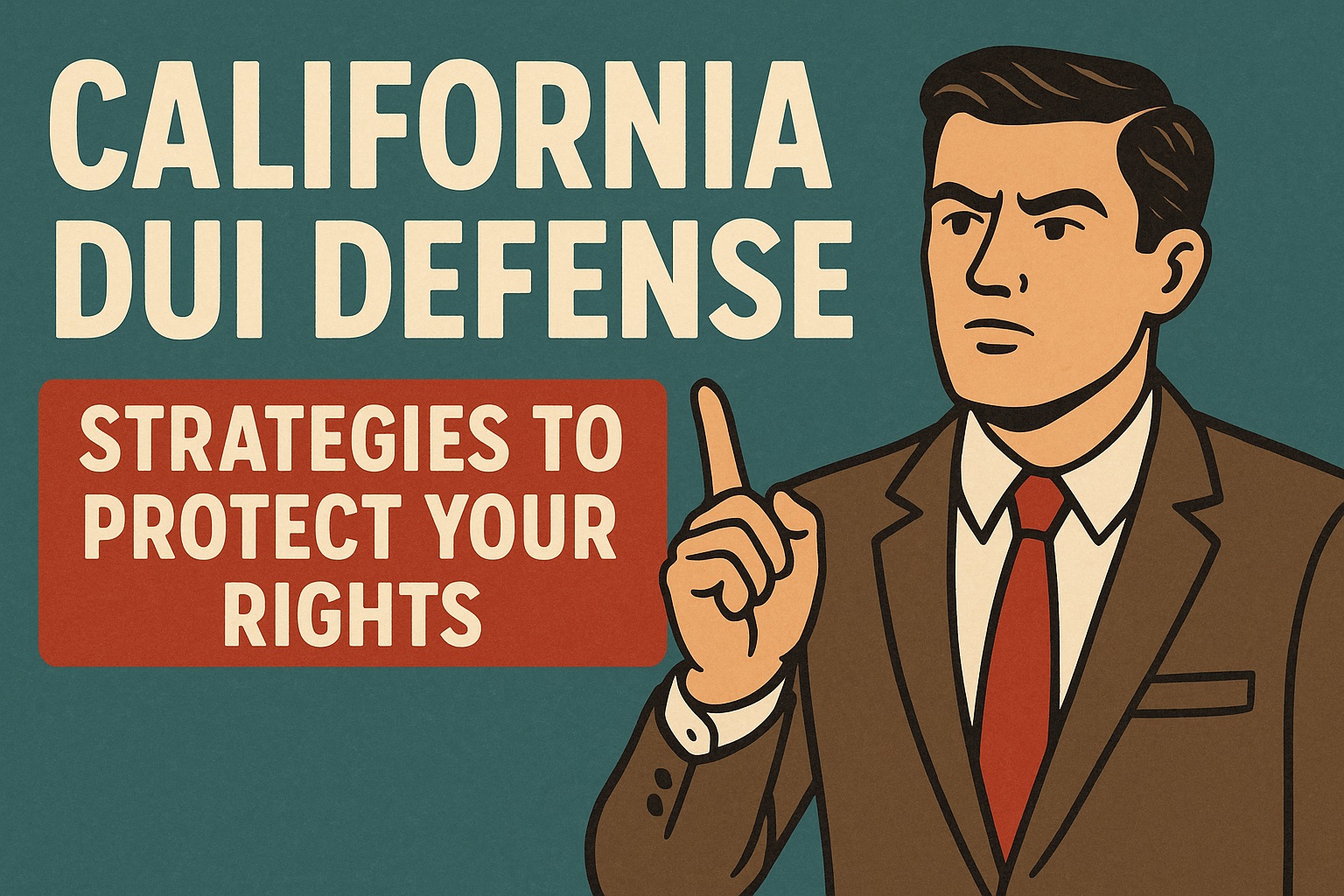Facing a DUI charge in California can be one of the most stressful, confusing, and life-altering events you will encounter. The state’s laws are strict, the penalties can be severe—including fines, license suspension, mandatory education programs, and even jail time—and the process is fraught with technical requirements and tight deadlines. This article provides a comprehensive, step-by-step guide to building a robust DUI defense tailored specifically to California’s legal landscape. From understanding your rights during traffic stops through trial preparation and appeals, we cover every critical stage. By the end of this guide, you will be equipped with the knowledge to evaluate test results, challenge procedures, and secure the most effective representation, maximizing your chances of a favorable outcome.
Understanding DUI Charges in California
Driving under the influence (DUI) in California means operating a vehicle while impaired by alcohol, drugs, or a combination of both. A DUI is typically charged when a driver’s blood alcohol concentration (BAC) is at or above 0.08% for adults, 0.04% for commercial drivers, or any detectable amount for drivers under 21. However, impairment cases often hinge on additional factors beyond simple BAC readings. California Vehicle Code sections 23152(a) and 23152(b) govern DUI offenses: subsection (a) addresses driving while impaired, and subsection (b) addresses driving with a legally prohibited BAC. The state also recognizes enhanced charges for higher BAC levels (above 0.15%), prior DUI convictions, and the presence of a minor in the vehicle. Understanding these distinctions is essential because each classification carries different penalties, mandatory programs, and potential enhancements. A thorough knowledge of the charging instrument—often called an arraignment sheet—can reveal inconsistencies, missing elements, or procedural missteps that form the basis of a strong defense strategy.
Your Rights During a Traffic Stop
When you are pulled over, you retain critical constitutional protections. The Fourth Amendment shields you against unreasonable searches and seizures, meaning that any traffic stop must be supported by reasonable suspicion of criminal activity or a violation of law. Officers must articulate the specific reasons for the stop—such as erratic driving, expired tags, or a broken tail light. If probable cause for arrest is lacking, evidence obtained after an improper stop may be suppressed in court. During the encounter:
- Remain calm and polite. Arguing or sudden movements can escalate the situation.
- Provide only requested documentation. California law requires you to present your driver’s license, vehicle registration, and proof of insurance when asked. You are not required to volunteer additional information about your evening or consumption history.
- Refuse consent to search. If the officer asks to search your vehicle, politely decline. Without probable cause or a warrant, the officer cannot lawfully search your vehicle.
- Invoke your right to remain silent. You may politely state, “I choose to remain silent,” and request an attorney if you are placed under arrest.
Recording the stop with a smartphone may deter misconduct and provide valuable evidence later, so long as you do not interfere with the officer’s duties.
Field Sobriety Tests and Chemical Tests: What to Expect
Officers use standardized field sobriety tests (SFSTs) and chemical tests to assess impairment. Understanding each can expose weaknesses in the prosecution’s case:
- Horizontal Gaze Nystagmus (HGN): This test assesses involuntary jerking of the eye as it follows a moving object. While often touted as the most reliable SFST, its accuracy can be affected by medical conditions (e.g., neurological disorders), prescription medications, and even fatigue or bright lights.
- Walk-and-Turn (WAT): This divided-attention test requires you to take nine steps heel-to-toe in a straight line, turn on one foot, and return. Factors such as uneven pavement, poor footwear, or nervousness can cause unsteady performance unrelated to intoxication.
- One-Leg Stand (OLS): Holding one leg off the ground while counting introduces challenges for individuals with balance issues, inner-ear conditions, or joint problems.
Chemical tests—breath, blood, and urine—provide numeric BAC results but are also vulnerable to procedural and equipment errors:
- Breath Test: Machines must be properly maintained and calibrated daily. Mouth alcohol (from recent belching, mouthwash, or dental appliances) can inflate readings. If the officer fails to observe the mandatory 15-minute observation period before testing, results may be suppressed.
- Blood Test: Needs to be drawn by qualified personnel, stored in proper containers with preservatives, and analyzed within strict timeframes. Chain-of-custody lapses or lab contamination can invalidate results.
- Urine Test: Least reliable and rarely used, but still susceptible to dilution or adulteration.
Challenging the accuracy and administration of these tests often forms the cornerstone of a solid defense.
Pre-Arraignment and Administrative License Suspension (ALS) Hearings
Immediately following arrest, California law mandates that the Department of Motor Vehicles (DMV) suspend your driving privileges through an Administrative License Suspension (ALS) if you fail or refuse a chemical test. You have 10 days from the arrest date to request an ALS hearing, which is entirely separate from your criminal case. This hearing focuses only on the suspension—not on guilt or innocence. The DMV must prove:
- A peace officer had probable cause to believe you were driving under the influence.
- You were lawfully arrested.
- You failed or refused the chemical test.
At this hearing, you can cross-examine the arresting officer, challenge the validity of field tests, and present evidence of medical conditions that might affect test administration. Winning an ALS hearing can preserve your driving privileges, which is critical for work, family, and daily life.
Building a Comprehensive Legal Strategy
A first-rate DUI defense will integrate multiple approaches rather than relying on a single angle. Common tactics include:
- Challenging Probable Cause: Demonstrating that the initial stop or subsequent arrest lacked reasonable suspicion or probable cause renders all downstream evidence inadmissible under the “fruit of the poisonous tree” doctrine.
- Suppressing Field and Chemical Test Evidence: Filing motions to suppress based on procedural failures, calibration logs, and expert testimony on test reliability.
- Attacking Officer Credibility: Reviewing body camera footage, comparing testimony for inconsistencies, and investigating the officer’s training record and disciplinary history.
- Negotiating Plea Bargains: In some cases, reducing charges to reckless driving (VC 23103) or wet reckless (VC 23103.5) can significantly lower penalties and avoid mandatory programs.
- Trial Preparation: Engaging DUI defense experts—pharmacologists, toxicologists, accident reconstructionists—to provide alternative explanations for observed impairment signs.
- Alternative Sentencing Advocacy: Proposing participation in California’s three-month or nine-month Alcohol Education Program (AEP) in lieu of jail time, community service, and other rehabilitative measures.
A layered approach increases the chances of dismissal, reduced charges, or minimized penalties.
Common Penalties and Programs for DUI Convictions
Penalties depend on factors such as BAC level, prior convictions, injury to others, and whether a minor was in the vehicle. Typical consequences include:
- Fines and Fees: Ranging from $390 to $1,000 for first offenses, plus penalty assessments that can multiply the base fine by 3-4 times.
- License Suspension and Restriction: Four-month suspension for a first refusal; six-month for a first fail. Restricted licenses may require interlock devices.
- Ignition Interlock Device (IID): Mandatory installation for certain offenses and repeat offenders, with monthly monitoring fees.
- Alcohol Education Programs: Three-month AEP for first offenses; nine-month for elevated BAC or recidivists. These programs include classes, counseling, and periodic testing.
- Jail Time: Up to six months for a first offense, increasing with enhancements.
Understanding how each penalty applies in your scenario informs plea negotiations and prepares you for the range of possible outcomes.
The Role of Expert Witnesses in DUI Trials
Experts can dismantle the prosecution’s case by explaining complex issues to the judge and jury:
- Toxicologists: Testify about how alcohol metabolizes, potential mouth-alcohol contamination, and discrepancy margins of error.
- Pharmacologists: Discuss the effects of prescription or over-the-counter medications that mimic signs of intoxication.
- Accident Reconstructionists: Reconstruct the events leading to your stop to challenge the assertion of erratic driving.
- Field Sobriety Test Analysts: Provide insight into medical or environmental factors that could produce false positives on SFSTs.
Preparation involves reviewing lab records, conducting independent testing, and deposing prosecution experts to expose knowledge gaps or biases.
Post-Conviction Remedies and Appeals
If convicted, you may still pursue relief:
- Motion for a New Trial: Based on newly discovered evidence, juror misconduct, or legal errors during trial.
- Pitchess Motion: To obtain personnel records of the arresting officer if you believe evidence of misconduct exists.
- Appeal to Appellate Courts: Challenging legal or procedural mistakes at trial, such as improper jury instructions or erroneous admission of evidence.
- Certificate of Rehabilitation and Pardon: After completing probation and fulfilling conditions, apply for a certificate or clemency to restore rights and ease employment barriers.
Timelines are strict—appeals must typically be filed within 30 days—so early consultation with appellate counsel is vital.
Conclusion
A DUI charge in California is not an inevitable conviction. By understanding your rights during stops, scrutinizing field and chemical tests, leveraging DMV administrative hearings, and constructing a multifaceted defense strategy, you position yourself for the best possible outcome. Seek experienced DUI counsel early, utilize expert witnesses to challenge evidence, and be proactive about deadlines and requirements. With thorough preparation, knowledge of local courts and judges, and an aggressive yet reasoned legal approach, you can protect your driving privileges, reputation, and future. | California DUI Defense Strategies | Your Path to Justice and Freedom








